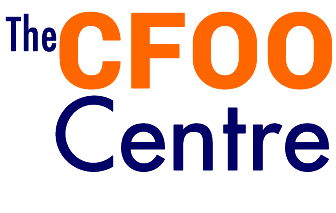S&OP is a proven process for aligning business objectives with operations. S&OP has been used by local as well as multinational organisations to keep operations and resources in line with the strategic organisational goals. From our own experience and from numerous resources available, the effective use of S&OP can help grow the top line of the business while reducing operating costs and reducing inventory levels and therefore directly and positively impacting Earnings Before Interest and Tax (EBIT).
The benefits of S&OP on Sales are:
Improved Service,
Reduced Out-of-Stocks,
Improved New Product Launch,
Improved Promotions Effectiveness
The benefits of S&OP to Cost Reductions are:
Material Cost Reduction,
Freight Cost Reduction,
Labour Productivity Improvement,
Fixed Cost Optimisation
And finally, the benefits of S&OP to Working Capital are:
Finished Goods Inventory Reduction,
Raw Materials and Work-in-Progress Reduction
Whilst there is expensive software available for S&OP, your organisation does not need specialised software for it’s implementation. Many organisations have had success with S&OP by executing the same on other platforms. There is however always room for improvement in the process, even if already implemented.
A major shift in S&OP over the last decade has been the use of more financial data and its analysis. It is also used for business what-ifs, together with demand and supply matching, and this is one of the biggest opportunities today. Achieving S&OP capabilities and performance requires a focused effort, dedicated, knowledgeable resources, and at least six months. Such a project is typically comprised of 3 phases:
The Preparation phase,
The Pilot Cycles phase,
The Continuous Improvement phase.
An initial S&OP assessment will reveal gaps and breakdowns in;
Supply
Demand
Financials
In some organisations, an additional stabilisation step may be necessary to address gaps and disconnects so as to establish a starting point for developing the S&OP process.
We will base our S&OP review on an internationally developed toolkit that would, amongst many other aspects, consider the following:
At layer 1
Inventory Costs,
Supply Chain Costs (%COGS),
Forecast Variances,
% Achievement of Plan,
Brand Growth,
SKU Complexity.
At layer 2
Forecast Accuracy,
Customer Fill Rates,
Days of Inventory on Hand (DIOH),
Production Plan Adherence (%),
Distributors/Customers DIOH.
At layer 3
Obsolescence Rates & Costs,
Forecast Accuracy Supply Adherence,
Promo Budget Adherence,
Financial Forecast Accuracy (%)
DOIH
Call us for an initial S&OP assessment/review for your organisation.
Our 4-phase process would be as follows:
Phase 1 – Diagnostics – The objective would be understanding the project goals clearly and to scope, structure and organise the diagnostics accordingly.
Phase 2 – Measure and assess current S&OP performance – The objective would be to collect the necessary data and compile the results to develop an initial assessment of the current environment.
Phase 3 – Identify improvement opportunities – Information would be analysed and interpreted to determine where performance gaps exist in order to begin quantifying opportunities and develop suitable alternatives.
Phase 4 – Finalise the business case.
The diagnostic effort would generally take around 4-6 weeks to complete, but the time will vary depending on the scope and scale of the project.
A sample of what we would report on includes:
Key metrics not being measured,
Key metrics being measured but not being monitored,
Metrics being measured incorrectly,
Fragmented metrics,
Lack of/improper ownership of metrics,
Poor data ownership,
No time-based metrics, such as Lead Time etc.
Metrics driving skewed behaviour
We will also:
Look at your planning model,
Identify capacity constraints across your organisation,
Identify financial constraints across your organisation
Help you in your planning and execution solutions.
This would then lead to us assisting you in implementing the S&OP Process.


